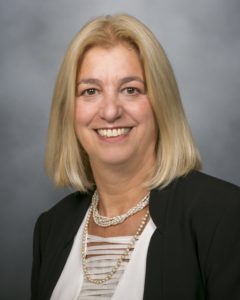Kaiser Permanente analysis finds at least 38 minutes of moderate exercise per day may make a difference
Pregnant women who exercised more during the first trimester of pregnancy had a lower risk of developing gestational diabetes, a new analysis of Kaiser Permanente data finds. The analysis found lower risk with at least 38 minutes of moderate intensity exercise each day, a bit more than current recommendations of at least 30 minutes per day on most days of the week. Gestational diabetes is a condition that can pose serious health problems for both mother and baby.

“We know that exercise is safe and beneficial for healthy pregnant women,” said lead author Samantha Ehrlich, PhD, adjunct investigator with the Kaiser Permanente Division of Research and assistant professor of public health at the University of Tennessee, Knoxville. “These results show that exercise is helpful in avoiding gestational diabetes, though you might need to do a little bit more than currently recommended to enjoy that benefit.”
The observational study was based on women’s self-reported levels of exercise during their first trimester of pregnancy. It found that exercising at least 38 minutes per day lowered the risk of gestational diabetes by 2.1 cases per 100 women, and reduced risk of abnormal blood sugar lower by 4.8 cases per 100 women.
“We know that 6 to 10 women per 100 get gestational diabetes,“ Ehrlich said. “If being more active could reduce that by 2 women per 100, that’s a clear benefit.” Gestational diabetes refers to diabetes diagnosed for the first time during pregnancy, and can lead to pregnancy and delivery complications, and increased future risk for diabetes in the mother and child.
The study, published Dec. 21 in the journal Diabetes Care, analyzed data collected for the Pregnancy Environment and Lifestyle Study (PETALS), a longitudinal study that included a physical activity questionnaire completed by 2,246 pregnant members of Kaiser Permanente Northern California. The researchers also had access to other survey data on exercise prior to pregnancy, diet, and women’s electronic medical records throughout their pregnancies so were able to track all blood glucose tests and gestational diagnoses.
A high volume of exercise was defined at the 75th percentile of the PETALS cohort, or at least: 264 minutes per week of moderate intensity exercise (for example, 38 minutes per day of walking), 132 minutes of vigorous intensity exercise (such as 19 minutes per day of jogging or walking up hills quickly), or some combination of moderate and vigorous intensity exercises that add up to a similar amount.
The study found this volume of exercise was associated with reduced risks of abnormal screening glucose and gestational diabetes. However, the current minimum threshold of exercise recommended for pregnant women, at least 30 minutes of moderate intensity exercise per day on most days of the week, was not associated with reduced risks of these conditions.
The authors suggested the current recommendations may need to be rethought to improve women’s chances of preventing gestational diabetes with exercise. The most recent guideline from the American College of Obstetricians and Gynecologists was updated in 2020 and encourages women to move more during pregnancy and the postpartum periods, recognizing that exercise is safe and beneficial for the vast majority of pregnant women.
“The results of this study suggest that meeting current recommendations for exercise during the first trimester of pregnancy does not confer reductions in the risks of abnormal screening and gestational diabetes,” they wrote. Future lifestyle interventions should consider advising more minutes per week of moderate or vigorous exercise for pregnant women free of complications and contraindications, they said.
The women in the study were racially and ethnically diverse and of a wide range of pre-pregnancy weight classifications. The study included women with overweight or obesity, which is important because these women are at greater risk of gestational diabetes. It is worth noting that exercise was reported by women of all weight classifications, and a reduced risk of gestational diabetes was observed in analyses limited to women with overweight or obesity only, Ehrlich noted.

Although the exercise data were self-reported, the women were asked about exercises that are typical for this population and included activities most women could complete without specialized exercise equipment or training, she said.
“A follow-up study is needed to assess whether 38 minutes or more of moderate intensity exercise each day during pregnancy also reduces the risk of childhood obesity, which is usually increased among children of women with gestational diabetes,” said co-author Assiamira Ferrara, MD, PhD, associate director and leader of the Division of Research women’s and children’s health section. Ferrara and her colleagues are now following the children of women from the PETALS study through the Environmental influences on Child Health Outcomes (ECHO) program, a National Institutes of Health initiative aimed at enhancing the health of children for generations to come.
The study was funded by the National Institute of Environmental Health Sciences and the National Institute of Diabetes and Digestive and Kidney Diseases.
Other co-authors were Monique Hedderson, PhD, Juanran Feng, MS, and Romain Neugebauer, PhD, all of the Kaiser Permanente Division of Research.





This Post Has 0 Comments